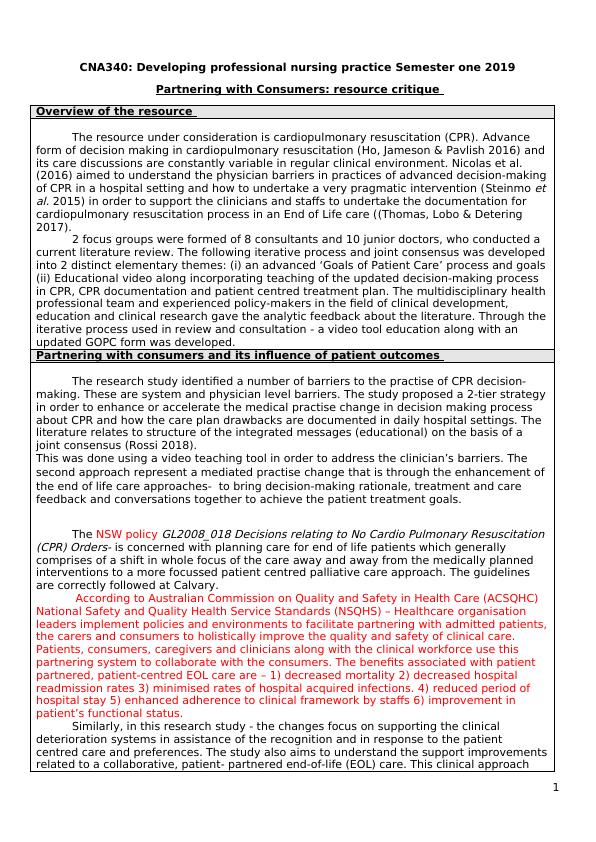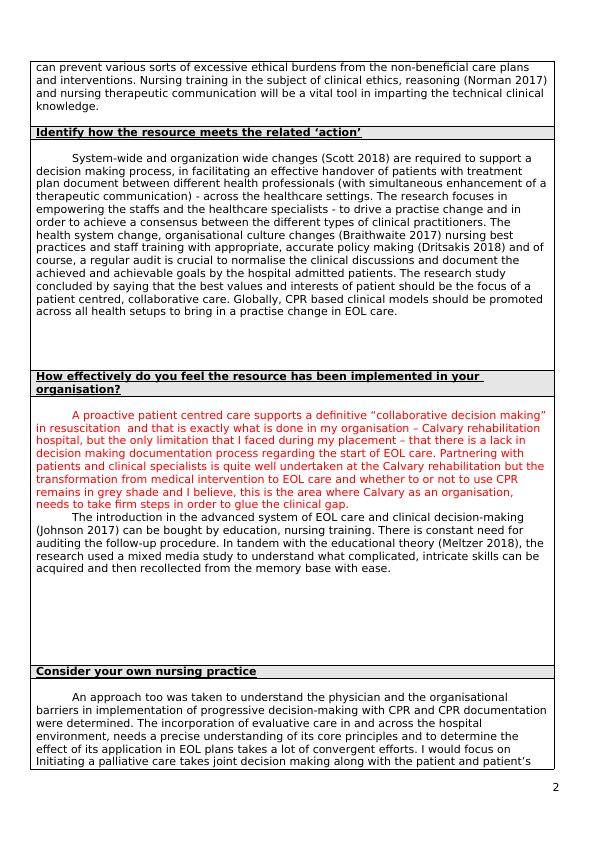Partnering with Consumers: Resource Critique on Cardiopulmonary Resuscitation (CPR)
Critique a resource intended to promote/maintain person-centered care in an organization and relate it to a specific action under Standard 2: Partnering with Consumers from the Australian Commission on Quality and Safety in Health Care (ACSQHC) National Safety and Quality Health Service Standards (NSQHS) (2017).
5 Pages2051 Words451 Views
Added on 2022-11-17
About This Document
This resource critique focuses on cardiopulmonary resuscitation (CPR) and its advanced decision-making process. It identifies barriers to CPR decision-making and proposes a 2-tier strategy to enhance medical practice change. The resource also discusses the benefits of patient-centered end-of-life care and the importance of nursing training in clinical ethics and reasoning. The article concludes by emphasizing the need for system-wide and organizational changes to support effective decision-making processes.
Partnering with Consumers: Resource Critique on Cardiopulmonary Resuscitation (CPR)
Critique a resource intended to promote/maintain person-centered care in an organization and relate it to a specific action under Standard 2: Partnering with Consumers from the Australian Commission on Quality and Safety in Health Care (ACSQHC) National Safety and Quality Health Service Standards (NSQHS) (2017).
Added on 2022-11-17
ShareRelated Documents
End of preview
Want to access all the pages? Upload your documents or become a member.
Assignment on nursing (PDF)
|4
|601
|105
A primer on PDSA: executing plan–do–study–act cycles in practice, not just in name
|7
|5121
|249


